Lets get things straight to start with. It is tempting to imagine that Sucre is so-named because it is really sweet or that they mine sugar in the surrounding mountains.
True, it does have more than its fair share of icing sugar white colonial buildings but it is actually named after a General who was active in the liberation movement and became the country's second president (Simón Bolívar was the first and he had the whole country named after him). Independence was actually declared here and we have now been told that the town is officially the capital of Bolivia but La Paz later took over as the home of the government so that city is now described as the de facto capital. (Not all residents of Sucre are so clear about this, we were also told that Sucre is called the second capital!)
We are staying in the sister hostel to our last hostel and things are similar but very different. Although this hostel is almost as attractive, there is less organisation and less attention to detail. We’re trying not to get frustrated by the fact that the WiFi doesn’t work and nobody seems to be able to say when (or if) it will be repaired. The hostel advertises that it has a Spanish school and we were hoping to study some more here. However, despite the emails we exchanged before we arrived, nothing has been done to set up our lessons so it looks like we’ll have to go elsewhere!
To be fair, all organisation in the town has been a bit slack because it has been the carnaval and Monday and Tuesday were public holidays so everything has been closed.
We had expected some sort of big parade on Saturday and/or Sunday with the holidays as time to recover but we were wrong. All through all four days, from late morning until well after midnight, the streets were filled with assorted raggedy gangs of mostly young people drinking heavily and lurching around in front of increasingly discordant brass bands. There is no set route or organisation and groups seem to go wherever they feel like going. All this accompanied by a barrage of water bombs, water pistols and buckets of water both from and at the marchers.
At first it was mildly amusing and during the first day we quite enjoyed sitting up in the balcony of a cafe called logically Los Balcones drinking sweet stout Inca beer and watching it all going on in the main square. As the days went on, however, it became more frantic and more tiresome.
Eventually it became impossible to walk anywhere in town without being pelted with water and we retired to the (albeit very attractive) courtyard of the hostel. Some fellow travellers have attempted to give as good as they got but have returned to the hostel very wet indeed!
On Tuesday afternoon, the staff at our hostel arranged a small carnaval ceremony in our courtyard while the havoc reigned outside. Fake money and lucky charms were burned (sounds more like Thailand doesn’t it) and we took turns to drip some wine and water onto the flames.
This was followed by a drink of 'Tiger’s Milk’ which is a mixture of milk and any available spirits, bottled in second hand bottles and sold all around the streets. The posh stuff has a clean bottle, with a typewritten label and a proper top, but most are done up with some old plastic and an elastic band with the bottle's original labels still in place. There seemed no stopping the locals but in the end, late on Tuesday night, we had a really big thunderstorm that seemed to bring carnaval to an end and thankfully sluiced down the streets. Too much drinking and marching over at least four days and a complete absence of public toilets in the town has had an obvious bad effect and the stench of urine in the streets was getting pretty intolerable (an aspect of carnaval that nobody normally advertises).
We have met a grand bunch of people here, most of whom have been present or past customers of an outfit called Intrepid Tours and stranded here because of carnaval (no buses). Most are making fairly long trips covering much of the ground that we are proposing but in reverse. So we have picked their brains for useful names and addresses for the next part of our journey out of Bolivia and into Peru. You possibly already know that Machu Picchu is curently unreachable because of landslides that have destroyed the trainline (we met a guy last week who had been trapped up there for five days before being helicoptered out – great story but probably a bit frightening at the time).
So we are thinking of making a bit of a detour to give ourselves two separate chances of getting up there. However, there are many other exciting looking sets of Inca ruins that get a lot of positive mentions by so it will not be a complete disaster if we don’t get there at all (‘and we can always come back next year’ says JZZ cheerfully).
Eventually our frustration about not being able to get spanish lessons organised, together with some disenchantment with the hostel’s organisation led to us deciding to cut short our time here and we have booked an overnight bus to La Paz (the highest capital city in the world).
Our last days were spent seeing some of the sights that have been closed throughout our stay. Our first visit was to a Museum of Indigenous Life and Crafts. This was housed in a really delightful old house and gave some good information about the past and present lives of some of the local tribal peoples. It included an explanation of the foundation of the ‘ceremony’ that we had taken part in at the hostel. Traditionally the special tokens and gifts are burned as an offering to Pachamama (Mother Earth) to ensure positive aspects of life such as health and happiness. Many of the ceremonies also traditionally include a llama foetus done up with herbs and sparkly bits which we were rather pleased had not figured in the hostel version!
The museum also showed the fruits of a project that has been going since 1995 to reintroduce and promote traditional skills of craft weaving in two distinct areas with very different styles. Through the project, the local people have been able to develop their work, for example by incorporating motifs from village life. Village men have also begun to weave and are developing their own approaches to traditional patterns using stronger colours and bolder motifs.
The Cathederal Museum contained a lot of predictably religious stuff and the Casa de Independencia had a lot of stuff about the independence movement. Although both were housed in lovely buildings, neither was particularly riveting. What interested us most in the latter was the series of portraits of Bolivian presidents since independence, testifying to Bolivia’s chronically unstable government.
There have been roughly 200 changes of government in 185 years; in 1841 three separate governments all claimed power simultaneously! The current president is the socialist Evo Morales, who was originally elected in 2006 and is their first president from an indigenous background. He was re-elected by a landslide in January 2009, following yet another constitutional reform and appears to still have considerable support.
Our final excursion was in the Dino Truck.
This is a converted truck with a plastic dinosaur on the front that takes you out to a cement works on the outskirts of the town; not your typical prime tourist destination! However, this site is different because it is actually the largest paleantological site in the world with over 5000 dinosaur footprints, including some unique tracks. Some have been used by scientists to calculate how fast some of the creatures could move and the collection includes the longest ever discovered track of a single dinosaur.
There is an interesting visitors centre with a number of life size models of dinosaurs. These are very realistic (as far as we can tell) and are accompanied by dinosaur and jungle noises. When we finally reached the footprints themselves we were at first a bit confused. The footprints were originally made as the animals crossed a river bed 68 million years ago and further sediment laid on top preserved them.
However, since that time the tectonic plates have moved and the mountains formed, pushing one side of the flat river bed upwards so that now the bed is nearly vertical. As a result, the tracks look as though the animals were going up and down a sheer cliff face! However this makes it easy to look across and follow many of the tracks.
Sadly the steepness of the face also presents a real problem and only two weeks ago a section collapsed destroying a large group of footprints. However, the better news is that each such fall reveals yet more layers of footprints laid down at different times. Although you can currently only view from a distance, there are casts of some of the tracks in the little museum in the centre so you can see the full size. Our guide also talked excitedly of recently approved plans to stabilise one side of the site and build a staircase that will allow visitors to go right up to the footprints (something for a later trip perhaps...)
No sugar but lots of water and... dinosaurs!
Friday, February 19, 2010
 Sucre, Bolivia
Sucre, Bolivia
Other Entries
-
67Xmas greetings!
Dec 2160 days prior Resistencia, Argentinaphoto_camera1videocam 0comment 7
Resistencia, Argentinaphoto_camera1videocam 0comment 7 -
68Resistencia: city of sculpture
Dec 2259 days prior Resistencia, Argentinaphoto_camera41videocam 0comment 0
Resistencia, Argentinaphoto_camera41videocam 0comment 0 -
69Our 'current' location
Dec 2358 days prior Corrientes, Argentinaphoto_camera24videocam 0comment 1
Corrientes, Argentinaphoto_camera24videocam 0comment 1 -
70Salta: our first sight of the Andes and our Xmas!
Dec 2556 days prior Salta, Argentinaphoto_camera35videocam 3comment 3
Salta, Argentinaphoto_camera35videocam 3comment 3 -
71Multicoloured mountains and angels with guns!
Dec 2754 days prior Humahuaca, Argentinaphoto_camera53videocam 0comment 1
Humahuaca, Argentinaphoto_camera53videocam 0comment 1 -
72Following the Train To The Clouds
Dec 2952 days prior San Antonio de los Cobres, Argentinaphoto_camera81videocam 0comment 0
San Antonio de los Cobres, Argentinaphoto_camera81videocam 0comment 0 -
73Cafayate; days of wine, icecream and waterways
Jan 0248 days prior Cafayate, Argentinaphoto_camera42videocam 0comment 3
Cafayate, Argentinaphoto_camera42videocam 0comment 3 -
74Tucumán; chilling out and getting heated!
Jan 0545 days prior San Miguel de Tucumán, Argentinaphoto_camera26videocam 0comment 1
San Miguel de Tucumán, Argentinaphoto_camera26videocam 0comment 1 -
75Like Birmingham but better!
Jan 1040 days prior Córdoba, Argentinaphoto_camera64videocam 0comment 2
Córdoba, Argentinaphoto_camera64videocam 0comment 2 -
76Wines, Bikes, Barnsley and Bernard O'Higgins
Jan 1634 days prior Mendoza, Argentinaphoto_camera45videocam 1comment 1
Mendoza, Argentinaphoto_camera45videocam 1comment 1 -
77Over the Andes to Santiago
Jan 2327 days prior Santiago, Chilephoto_camera95videocam 0comment 8
Santiago, Chilephoto_camera95videocam 0comment 8 -
78Carnival Time in Paradise Valley!
Jan 2723 days prior Valparaíso, Chilephoto_camera89videocam 0comment 6
Valparaíso, Chilephoto_camera89videocam 0comment 6 -
79City of churches, craft stalls and penguins!
Jan 3119 days prior La Serena, Chilephoto_camera55videocam 1comment 1
La Serena, Chilephoto_camera55videocam 1comment 1 -
80More Marys than you can shake a skull stick at.
Feb 0613 days prior San Pedro de Atacama, Chilephoto_camera91videocam 3comment 1
San Pedro de Atacama, Chilephoto_camera91videocam 3comment 1 -
81Mountains, lakes, salt plains & altitude sickness
Feb 0811 days prior Uyuni, Boliviaphoto_camera82videocam 1comment 5
Uyuni, Boliviaphoto_camera82videocam 1comment 5 -
82Dead people, dead trains and dead electrics!
Feb 109 days prior Uyuni, Boliviaphoto_camera30videocam 0comment 3
Uyuni, Boliviaphoto_camera30videocam 0comment 3 -
83Let the festivities begin (but not in the convent)
Feb 136 days prior Potosi, Boliviaphoto_camera78videocam 0comment 0
Potosi, Boliviaphoto_camera78videocam 0comment 0 -
84No sugar but lots of water and... dinosaurs!
Feb 19 Sucre, Boliviaphoto_camera61videocam 0comment 5
Sucre, Boliviaphoto_camera61videocam 0comment 5 -
85Possibly the highest capital city in the world...
Feb 234 days later La Paz, Boliviaphoto_camera89videocam 1comment 4
La Paz, Boliviaphoto_camera89videocam 1comment 4 -
86Shining Lake Titicaca (when it isn't raining).
Feb 267 days later Copacabana, Boliviaphoto_camera47videocam 1comment 2
Copacabana, Boliviaphoto_camera47videocam 1comment 2 -
87Despite the name, it's not always sunny here!
Feb 289 days later Isla del Sol, Boliviaphoto_camera51videocam 0comment 0
Isla del Sol, Boliviaphoto_camera51videocam 0comment 0 -
88Incas, Pre-incas and a load of willies.
Mar 0514 days later Puno, Peruphoto_camera113videocam 0comment 0
Puno, Peruphoto_camera113videocam 0comment 0 -
89Road blocks, demos and a scenic journey to Cusco
Mar 0615 days later Cusco, Peruphoto_camera76videocam 0comment 5
Cusco, Peruphoto_camera76videocam 0comment 5 -
90Touring the Sacred Valley
Mar 0716 days later Ollantaytambo, Peruphoto_camera50videocam 0comment 8
Ollantaytambo, Peruphoto_camera50videocam 0comment 8 -
91Visiting the Inca sites around the city.
Mar 0918 days later Cusco, Peruphoto_camera46videocam 0comment 3
Cusco, Peruphoto_camera46videocam 0comment 3 -
92The White City
Mar 1625 days later Arequipa, Peruphoto_camera92videocam 0comment 2
Arequipa, Peruphoto_camera92videocam 0comment 2 -
93Strange markings at Dead Bull!
Mar 2332 days later Toro Muerto, Peruphoto_camera32videocam 0comment 0
Toro Muerto, Peruphoto_camera32videocam 0comment 0 -
94Colca Canyon 1: Snow and the Ice Maiden
Mar 2534 days later Chivay, Peruphoto_camera17videocam 0comment 2
Chivay, Peruphoto_camera17videocam 0comment 2 -
95Colca Canyon 2: Watch out, condors about!
Mar 2736 days later Cabanaconde, Peruphoto_camera56videocam 1comment 1
Cabanaconde, Peruphoto_camera56videocam 1comment 1 -
96Colca Canyon 3: Hot and Passionate
Mar 2837 days later Arequipa, Peruphoto_camera21videocam 0comment 0
Arequipa, Peruphoto_camera21videocam 0comment 0 -
97More lines and symbols but this time they're BIG!
Mar 3140 days later Nazca, Peruphoto_camera41videocam 0comment 2
Nazca, Peruphoto_camera41videocam 0comment 2 -
98Sun worshipping through the years
Apr 0444 days later Trujillo, Peruphoto_camera62videocam 0comment 2
Trujillo, Peruphoto_camera62videocam 0comment 2 -
99We go in search of GOLD!
Apr 0747 days later Chiclayo, Peruphoto_camera58videocam 0comment 4
Chiclayo, Peruphoto_camera58videocam 0comment 4 -
100Sun, surf and a very loud children's fairground
Apr 1151 days later Máncora, Peruphoto_camera22videocam 0comment 3
Máncora, Peruphoto_camera22videocam 0comment 3 -
101In search of exotic animals: we find iguanas
Apr 1353 days later Guayaquil, Ecuadorphoto_camera21videocam 0comment 1
Guayaquil, Ecuadorphoto_camera21videocam 0comment 1 -
102We arrive and dive.
Apr 1656 days later Puerto Ayora, Ecuadorphoto_camera64videocam 2comment 1
Puerto Ayora, Ecuadorphoto_camera64videocam 2comment 1
Comments
2025-05-22
Comment code: Ask author if the code is blank

 Sucre, Bolivia
Sucre, Bolivia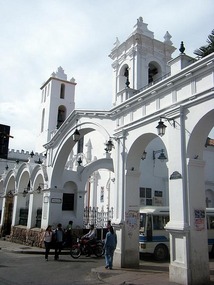

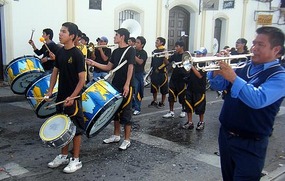
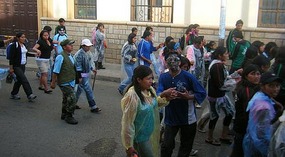
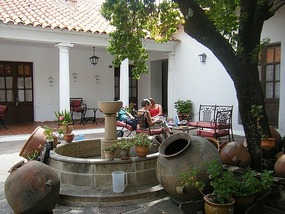
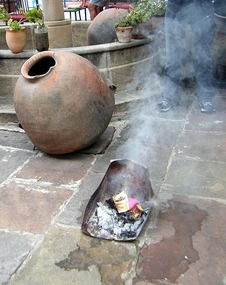
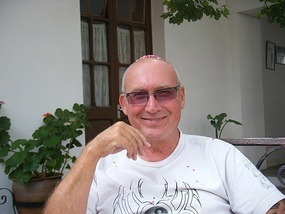
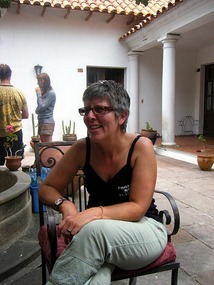
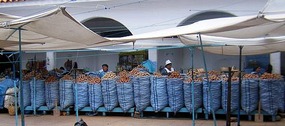
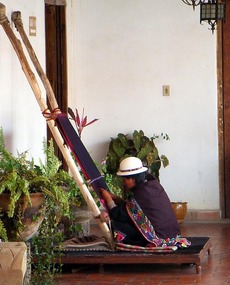
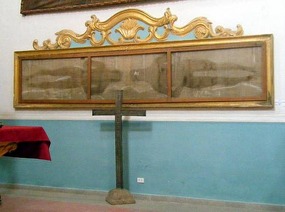
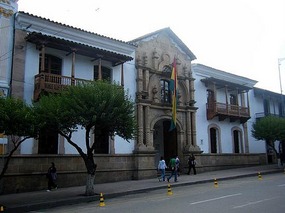

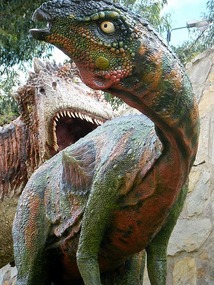
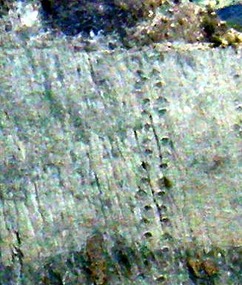
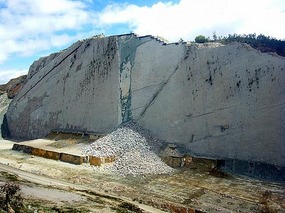






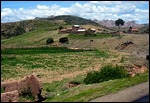

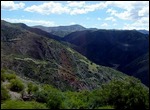

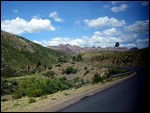
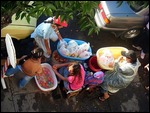
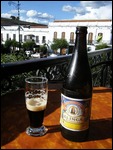
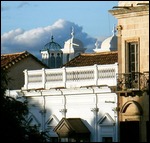
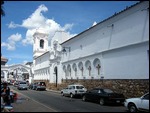
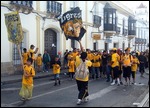
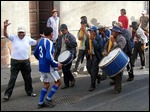
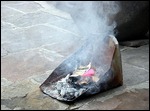
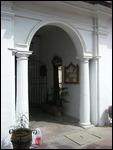
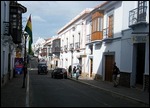
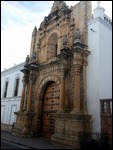
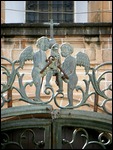
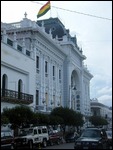

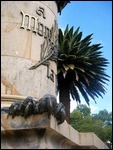
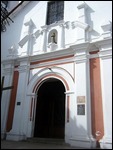
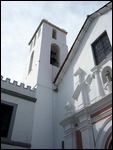
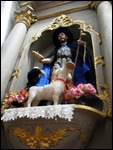
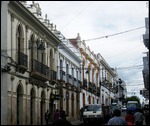
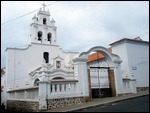
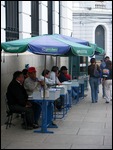
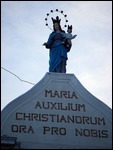
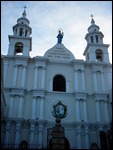
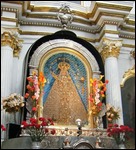
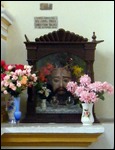
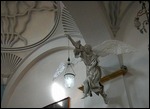


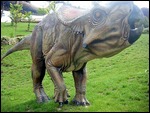
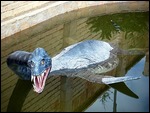
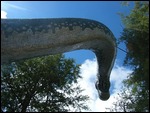
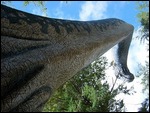
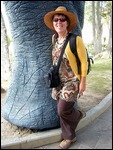
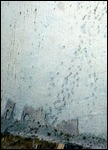
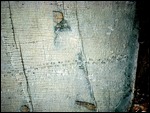
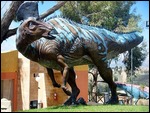
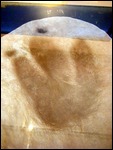
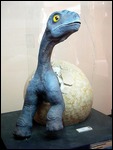

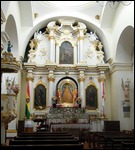
hola
2010-02-22
Residents of Sucre are not called Sureños, they are called Sucrenses. And Sucre, per both the former and new 2009 Bolivian Constitution is, always has been, and still remains as Bolivia's one and only capital city. La Paz is simply the seat of government (hence the name "de facto capital").
jenandtony
2010-02-22
Thanks for the information, we have now amended the blog as you suggest. However, we have to say that our original post was based in information given to us by Sucre residents, perhaps you had all better get together to get your story straight!
BoliviaBella
2010-02-22
Here's the reason why Bolivia is often the only country in the world to have TWO capital city stars on it (plus a little history on how and why the government came to be divided into two cities). http://www.boliviabella.com/capital.html
It's very interesting actually!
Don't be mad at the people of Sucre. They've just gotten over a failed and lengthy attempt to get the other two branches of government moved back to Sucre. In 2008 there were protests and blockades and stuff about it. It just isn't viable but they really did try hard. They are proud of their heritage as Bolivia's capital city.
What they did achieve was to ensure the very first line of Bolivia's Constitution (completely re-written by the current government) NOT be changed. So in that aspect the writer above is correct. The first line and article of Bolivia's new Constitution says simply this: "Sucre is the capital of Bolivia".
Really enjoyed your article by the way. It's on Topix.com
BoliviaBella
2010-02-22
p.s. WOW you have some truly gorgeous photos!
jenandtony
2010-02-22
Hola Bella, thanks very much for the helpful information. Thanks also for the positive comment on our photos and informing us about our appearance on Topix. We basically write the blog for friends and family and we had no idea that it might be picked up more widely that way!